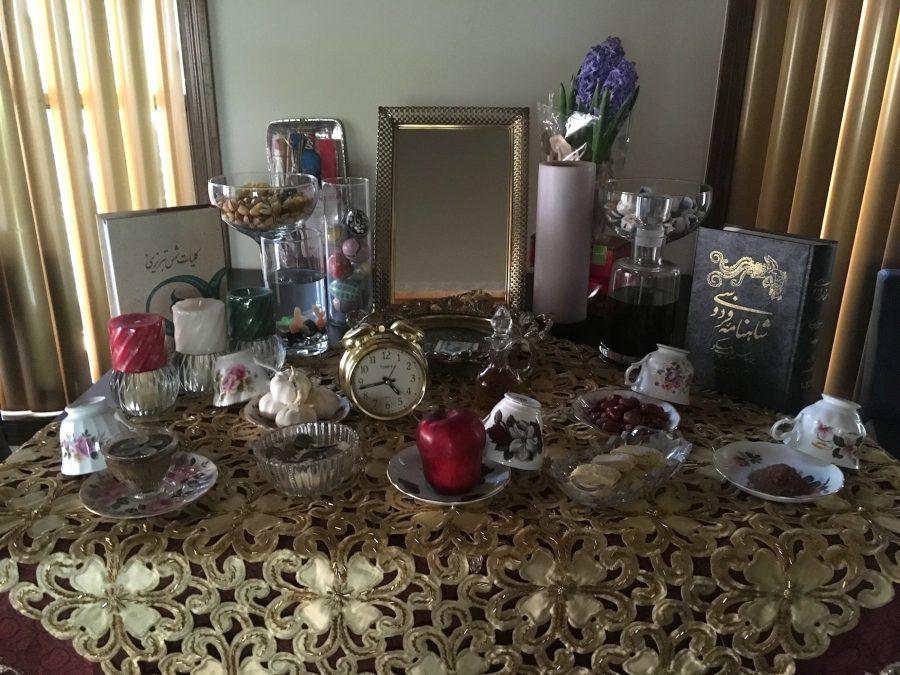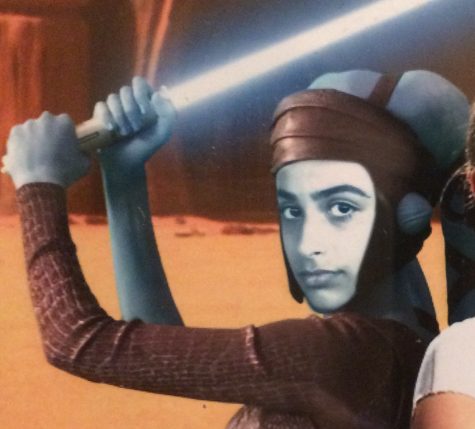NC Iranians celebrate Nowruz, ring in new year
The Haft-Sin table displays symbolic items that ensure happiness and prosperity in the new year.
March 22, 2017
On the first day of spring, Monday, March 20, NC’s Iranian students and teachers celebrated Nowruz (translated from Farsi as “new day”), also known as Persian New Year.
Persian New Year falls on the vernal equinox, meaning its date fluctuates year to year based on the earth’s axis of rotation. The main tradition of new year involves setting a table called the Haft-Sin or Seven S’s, with apples, barley, dried olives, garlic, sumac fruit, vinegar, and wheat pudding. These seven symbolic items starting with the letter “s” serve to guide Iranians in a successful new year.
“We set up our fireplace with the symbols, the seven S’s,” sophomore Charity Tillman said. “This was the first year we researched what everything meant, so I learned a lot about what each symbol represented.”
The seven elements represent beauty, rebirth, love, medicine, sunrise, age, and wealth, respectively, ensuring enrichment of all aspects in the new year. If one cannot obtain all elements, coins and hyacinth flowers serve in the place of the traditional items. Added decorations include displaying colored eggs, a goldfish, a mirror, traditional Persian texts, and candles.
“I definitely enjoyed setting up the [table],” sophomore Somayeh Ghasemi said. “I decorated eggs with traditional Persian [designs]. My mom showed me how.”
Aside from the Haft-Sin tabletop, Iranians practice other traditions, like eating a large family dinner involving fish and rice. Furthermore, children, visited by the fictional Persian character Amu Nowruz, receive gifts and money to celebrate embarking on the new year.
“Normally, we give and get money,” World Literature teacher Alexandra Yeganegi said. “We put 20 dollar bills inside balloons.”
Nowruz also includes Chaharshanbe Suri, better known as the Festival of Fire, where Iranians celebrate the last Wednesday of the year by jumping over fire, representing moving past obstacles of the previous year.
“I love that. That’s just such a different cultural piece we don’t have here,” Yeganegi said. “It’s always a neat way to spend some time with family and friends and celebrate spring.”
After Nowruz, on the thirteenth day of the new year, Iranians hit the outdoors to celebrate Sizdah Bedar. On this day, Iranians honor nature and throw picnics, ending the event with the throwing away of the Haft-Sin (usually into water). The Haft-Sin, by tradition, collects all sickness, pain, and evilness of the new year within the twelve day interval, and throwing it all away ensures happiness.
The Persian New Year focuses on forgetting the struggles of the previous year and preparing for a successful new one with family, friends, and other loved ones.
“We had our relatives come over, and we made a nice little Persian dinner,” Tillman said. “It was just a great time with my family.”







